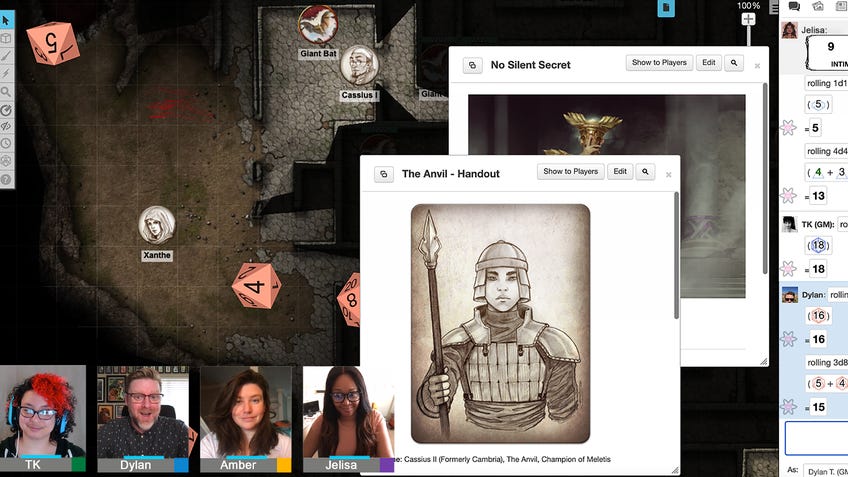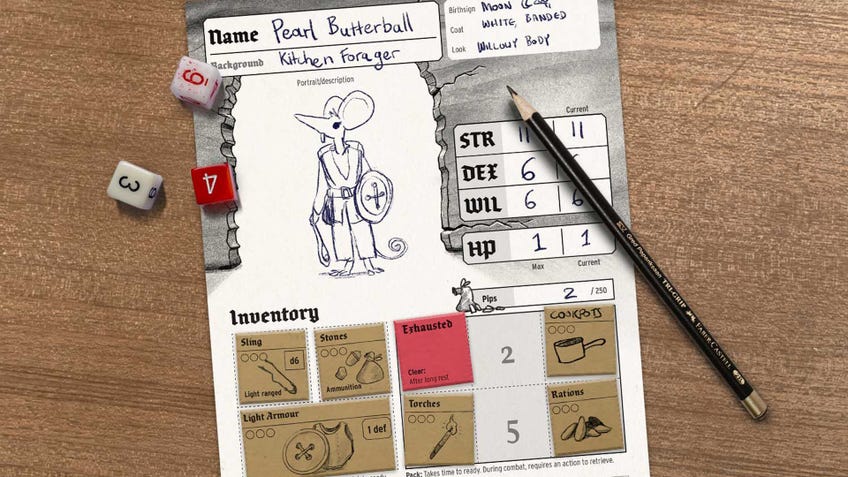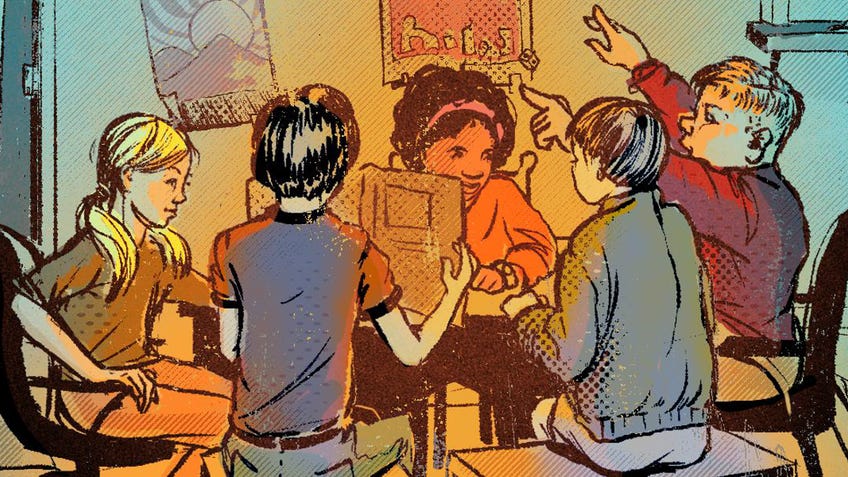How to run a Session 0 for D&D and other RPGs
Go from Zero to heroes.
You’ve got your friends to agree to a weekly game, you’ve picked an RPG and now you’re ready to jump into playing! Before setting foot on your first adventure, it’s actually a good idea to get your players together and have a chat before the game even begins. This is called a Session 0.
A great Session 0 is partly a chance to agree on types of snacks to bring, so someone gets sweet and someone else salty, but it’s also a good way of having happier players and more enjoyable sessions, and saves a ton of upset down the line.
Beyond making characters, it can seem like there’s not much to cover before you start playing a tabletop RPG, but there are actually many things you can discuss that make your life as a GM easier and means players have a better time playing. A win-win for everyone.
In this guide on how to run a Session 0, we’ll take you through the best things to cover in a Session 0 no matter what RPG you’re playing.
What is Session 0?
At its simplest, Session 0 is a chance to explain the game you’re playing, before you play for real. This can be as simple as going through the rules of your chosen RPG system together in the same room - or on a call, if you plan to play online.
Explaining the mechanics of play through messages can be a struggle and not everyone will own the book or PDF to read through. A Session 0 allows you to get everybody on the same page when it comes to the basics - even if that’s just what dice to roll when.
One of the reasons a Session 0 is so important is that every table is different. You may have homebrew rules that new people aren’t familiar with. Or perhaps you allow players to flavour their spells differently, so you can ask what magic looks like when they cast it. It can even be as simple as any dietary requirements for snacks. Everyone needs sustenance to make it through a big fight, and you don’t want any hangry players. Or, even worse, GMs.

If you’re playing your RPG online, you might also use different software than people are used to. A Session 0 can help you make clear what systems people need to work with, such as setting up an account on Roll20, getting character minis ready for a session or even just sharing your address for an in-person game. Taking time to iron out issues before playing means no-one will be trying to sort their camera for 10 minutes on Discord during the first game, eating into valuable play time.
We need time to work stuff out! So lay out even the obvious things in a Session 0 to make sure everyone is ready to roleplay as soon as game day rolls around.
Session 0 checklist
Set the tone
During your Session 0, you’ll want to explain what type of game you’ll be running. This is less to do with the crunchy stuff and more about setting expectations when it comes to the adventure's tone. If someone arrives expecting high fantasy and political intrigue but you’re running a sillier monster of the week-style adventure, players will end up disappointed. If they understand the game from the start, though, everyone is much more likely to have a good time. Preventing this kind of miscommunication is what a Session 0 is all about.
Introduce your world
If you’ve homebrewed an amazing world, a Session 0 is your chance to answer questions about it before playing. You’ve likely already shared the relevant notes and docs with players, but getting to properly chat about the gods or explain certain festivals can open up questions from players more than just reading through a doc. They might even come up with things you’ve never considered before, such as whether magic is commonly used or other famous adventurers they might know. Make sure everyone is familiar with the aspects of your world they should know before rolling that first die.
A side note: you’ll want people to read all of your notes but, realistically, no-one is going to be as invested in your world as you, especially if there’s thousands of words to get through. Give them the SparkNotes version now and they’ll come crawling back for more lore once you’re playing.
Help players create their characters
The most common thing players do in a Session 0 is develop characters. This is where you cover how you want people to create stats, be it rolling or standard array if you’re playing something like D&D. Or perhaps let people know you want to use Greek gods as the inspiration for superheroes in City of Mist.
Of course, that’s only half part of what goes into a character. Discussing the tone of the campaign is equally important to help guide character creation. If you’re playing superhero RPG Mutants and Masterminds, you might decide to set your campaign in the Golden Age of comics. This will have a very specific look and feel, so someone coming in with an edgy modern-day character isn’t going to fit into the whimsy; either that player will have a bad experience, or you as the GM will struggle to merge them into the story. You can subvert expectations and have a ton of fun with that, but players and GMs need to discuss it beforehand!
Some games will have very specific notes on characters, too. The Wild Beyond the Witchlight setting for D&D 5E needs every player to have something stolen from them in childhood, such as a sense of direction or sense of style, to set up the campaign’s story. A Session 0 allows you to lay out these expectations clearly so no-one turns up with something like a happy druid to a Curse of Strahd game and quickly feels out of place.
The last point on character creation is that you should be clear what type of characters aren’t allowed at your table, such as evil ones or loners who avoid the rest of the group. Or if homebrew classes aren’t okay, and which sourcebooks players can and can’t pick spells or traits from. You never know what players might come up with, so it pays to cover your bases.

Explain safety tools
Probably the most important topic to cover during your Session 0 are safety tools for the game. Making sure everyone is happy at the table is really important, so taking a minute to cover means you’ll hopefully avoid upsetting anyone - or anyone upsetting you further into the game.
A common safety tool used in the tabletop RPG community is Lines and Veils, developed by Ron Edwards in a supplement for his Sorcery RPG. Lines are things that are never crossed; you all agree that these topics will never come up in the game. Veils, on the other hand, are things that can exist but happen ‘off-screen’ - you fade to black or reference them but don’t actually roleplay the scenarios.
Of course, you can’t prepare for everything. RPGs are all about improvising so something unexpected might still come up. For such situations, we’d recommend using the X Card by John Stavropoulos. This is a piece of paper with an X drawn on it that players can touch or hold up at any time to indicate they’re uncomfortable. GMs and other players can move the story on and away from the troubling matter, and later GMs can check in to see what new topic should be added to the group's lines or veils. This kind of thing takes minutes to discuss and makes sure everyone enjoys themselves. This is a game after all - we’re here to have fun.
Even if you know all the players, it’s always worth going over this kind of thing again as each campaign is different and people’s feelings change. Swarms of spiders in a horror game like Call of Cthulhu might be okay, but your players might be less happy seeing them turn up a weekly D&D session.
Build the world together
A Session 0 can involve a lot of laying out rules and guiding players on backstories, but it’s also a chance to get your players to work for you. Feel free to present any NPCs or locations you’d like your group to come up with.
Players also need to be clear with each other, not just the game master, about their likes and dislikes in a game. Are they happy to have other players flirt with their characters and have inter-player romances? Do they like dramatic moments of roleplay alongside the fights, so want time to experience that? It’s better to work this kind of thing out early before the bard starts being a bard.
This can also be an opportunity to have players make connections with other characters within the group. Maybe a ranger and a barbarian find out they both grew up at sea during the session. Great! Now they have a backstory where they were pirates together for a few years.

If you’re not sure how to link the whole group together for the first game, consider getting your players to come up with a fun way they all know each other. Maybe they all turn up at the same park, perhaps they’ve already adventured together before and defeated a dragon, or maybe they just all took a free mead token for a tavern - the easiest way to get adventurers in one room. Whatever they decide (with your guidance) can save you a lot of hassle joining their backstories together.
For some RPGs, the system actually requires you to do this kind of collaborative world-building before playing. For example, in Kids On Bikes players take turns deciding where the town is set, what it’s known for and rumours they’ve heard around it. From there a GM can write the info up and give themselves time to plan, creating a list of random NPCs before actually diving straight into play, plus players will be familiar with their setting before jumping on a bike and peddling into action. Just because a system doesn’t tell you to do this, it doesn’t mean you can’t put your players to work! It’s like dosing broccoli in cheese - it’s fun for players and they never realise they’re doing some of the GM’s job.
What comes after a Session 0?
As a fun extra, after a Session 0 you can also have a Session 0.5. This is basically a pre-game game. If all the characters agreed that they’ve adventured together before, why not play out that little adventure before diving into the main campaign? You can also take this time to run one-on-one sessions with players so they can get familiar with a new class or try out some accents before having to reveal their character fully.
Keep in mind that you don’t have to cover everything in a Session 0 - just what feels relevant to your table - but the more you do go over, the easier it should make running and playing your game further down the long, windy, bandit-filled road.



